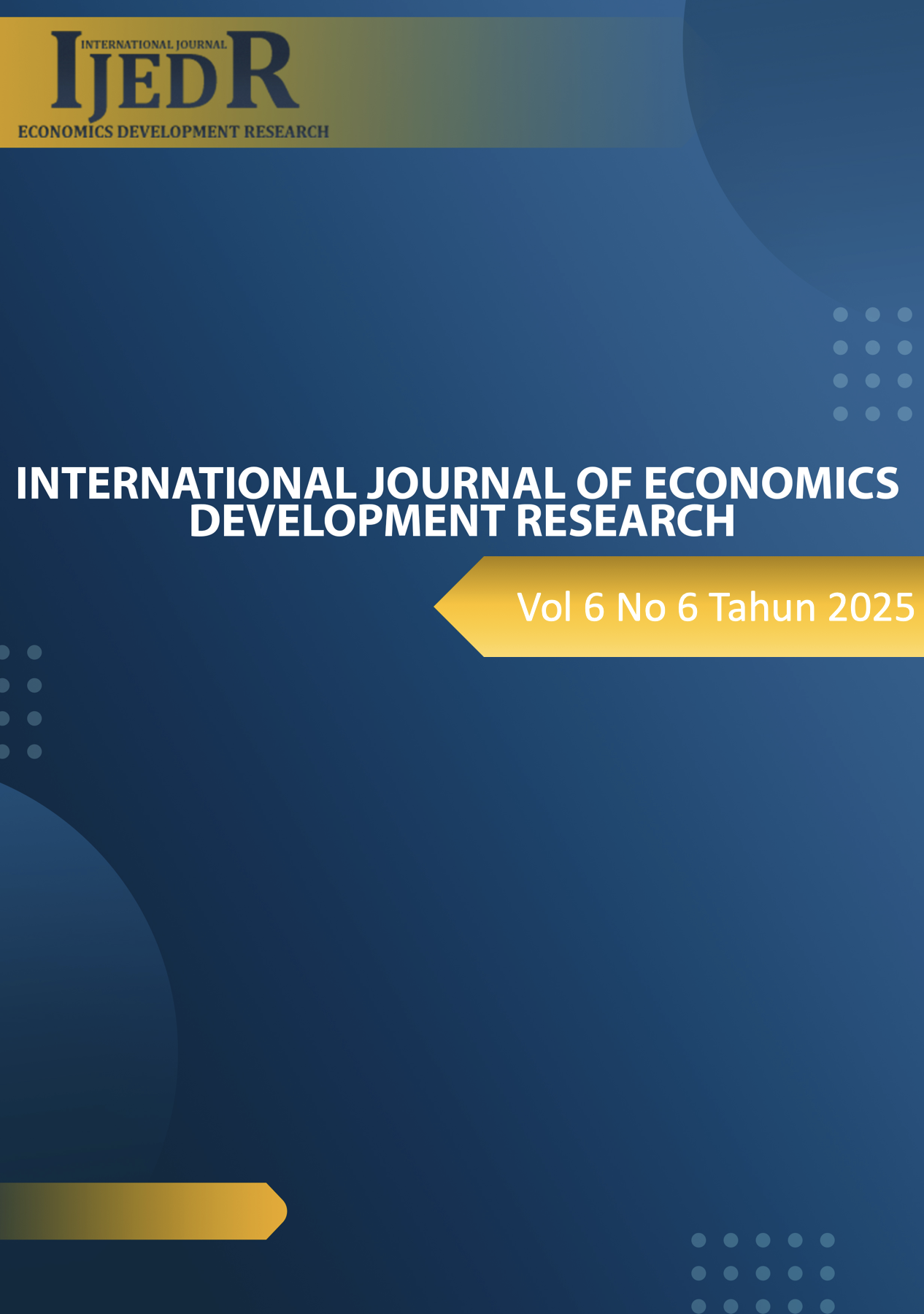Strategic Approaches to Improving Service Quality at Hospital
DOI:
https://doi.org/10.37385/ijedr.v6i6.9410Keywords:
Service Quality, Hospital Management Strategy, Clinical Protocol Compliance, SWOT Analysis, Regional Public Hospital, SERVQUALAbstract
This study aims to formulate strategic recommendations for enhancing the service quality of RSUD Ciawi. Despite its strategic location and status as a primary referral center in Bogor Regency, RSUD Ciawi faces critical internal challenges, evidenced by low compliance rates with several National Quality Indicators (INM) (Permenkes No. 30/2022) and persistent public complaints regarding service responsiveness and reliability. This research employs a qualitative descriptive case study method utilizing SWOT analysis (Input, Matching, and Decision stages) and the SERVQUAL model dimensions (Tangibles, Reliability, Responsiveness, Assurance, and Empathy) to identify influencing factors and define actionable strategies. Key data were collected through interviews with key informants and document analysis. The findings reveal a critical lack of staff compliance in crucial clinical protocols, notably Hand Hygiene (53%–69% compliance), Use of Personal Protective Equipment (APD) (65%–81%), and Adherence to Clinical Pathways (25%–49%). Systemic weaknesses also include complicated administrative processes for emergency procedures (C-Section) and capacity limitations (inpatient beds). The resultant strategy focuses on integrated digitalization (RME/Clinical Pathway), strict disciplinary enforcement, and simplification of emergency service procedures to mitigate financial and reputational risks.
References
Alfatafta, M., AbuAlhommos, A., & Alhawamdeh, M. (2025). Assessing service quality and its impact on patient experience: A multicenter study using SERVQUAL. BMC Health Services Research, 25, 13172. https://doi.org/10.1186/s12913-025-13172-z
Alhussin, E. M., Almutairi, S. H., Alotaibi, A. A., & Alqarni, A. M. (2024). Patients’ satisfaction with the quality of nursing care: Coordination and discharge processes. Nursing Open, 11(3), 1345–1356. https://doi.org/10.1002/nop2.2274
Alshagrawi, S., Alshammari, H., Alenazi, H., & Alenezi, A. (2024). Determinants of hand hygiene compliance among healthcare workers in intensive care units: A qualitative study. BMC Public Health, 24, 19461. https://doi.org/10.1186/s12889-024-19461-2
Armstrong-Novak, J. D., Patel, M., Ramirez, L., & O’Neill, J. (2023). Healthcare personnel hand hygiene compliance: Are we improving? The Lancet Infectious Diseases, 23(7), 789–799. https://doi.org/10.1016/S1473-3099(23)00123-4
Begum, F., Islam, M. A., Rahman, M. M., & Sultana, R. (2022). Patient satisfaction level and its determinants after admission in public and private tertiary care hospitals in Bangladesh. Frontiers in Health Services, 2, 952221. https://doi.org/10.3389/frhs.2022.952221
Cai, Y., Zhang, Q., & Wu, L. (2025). Relationship between length of stay and SERVQUAL dimensions of patient satisfaction in a tertiary hospital. Scientific Reports, 15, 90176. https://doi.org/10.1038/s41598-025-90176-z
De Steenwinkel, M., Verhaegh, E., van Dongen, J., & Schoonhoven, L. (2022). Patient satisfaction, needs, and preferences concerning information dispensation at the emergency department. International Journal of Emergency Medicine, 15, 45. https://doi.org/10.1186/s12245-022-00407-7
Elliott, M. N., Lehrman, W. G., Goldstein, E., & Klein, D. J. (2023). Changes in patient experiences of hospital care during the COVID-19 pandemic. JAMA Health Forum, 4(8), e230123. https://doi.org/10.1001/jamahealthforum.2023.0123
Hasanah, N. El., Pane, M., Hutajulu, J., Ketaren, O., & Risma, D. (2023). Kepuasan pasien terhadap pelayanan kesehatan: Survei pada pasien rawat inap di Klinik PT. Bridgestone. Jurnal Kesehatan Tambusai, 4(2), 1833–1847.
Houtmann, S., Dupont, A., Lee, C., & Richter, T. (2023). Clinical pathways utilization and characteristics of non-adherence: Implications for hospital quality management. Journal of Clinical Oncology (Supplement), 41(16_suppl), e13505. https://doi.org/10.1200/JCO.2023.41.16_suppl.e13505
Jonkisz, A., Karniej, P., & Krasowska, D. (2021). SERVQUAL method as an “old new” tool for improving healthcare quality. International Journal of Environmental Research and Public Health, 18(20), 10758. https://doi.org/10.3390/ijerph182010758
Khairunnisa, E. N. (2022). Analisis kebutuhan mutu pelayanan dengan mengintegrasikan total quality manajemen dengan SERVQUAL. Schema: Journal of Psychological Research, 35–44. https://doi.org/10.29313/schema.v0i0.11043
Koebe, P., & Bohnet-Joschko, S. (2023). The impact of digital transformation on inpatient care: A scoping review. JMIR Public Health and Surveillance, 9(1), e40622. https://doi.org/10.2196/40622
Mauro, M., Noto, G., Prenestini, A., & Sarto, F. (2024). Digital transformation in healthcare: Assessing the role of hospital characteristics. Technological Forecasting & Social Change, 189, 122615. https://doi.org/10.1016/j.techfore.2024.122615
Nemati, R., Bahreini, M., Pouladi, S., Mirzaei, K., & Mehboodi, F. (2020). Hospital service quality based on HEALTHQUAL model and trusting nurses at Iranian university and non-university hospitals: A comparative study. BMC Nursing, 19, 118. https://doi.org/10.1186/s12912-020-00513-y
Nguyen, N. X., Nguyen, H. T., Le, Q. T. T., & Nguyen, T. P. (2021). Impact of service quality on in-patients' satisfaction, perceived value, and customer loyalty. Patient Preference and Adherence, 15, 255–268. https://doi.org/10.2147/PPA.S333586
Rusdi, A., & Sjaaf, A. C. (2023). Analisa faktor-faktor penyebab terjadinya keterlambatan tindakan operasi (delay to operation) di Instalasi Rawat Darurat RSUP Sanglah Desember 2017–Februari 2018. Jurnal ARSI: Administrasi Rumah Sakit Indonesia, 9(1). https://doi.org/10.7454/arsi.v9i1.2498
Sangal, R. B., Johnson, K., Patel, A., & Ramesh, S. (2022). Implementation of an electronic health record integrated clinical pathway improves adherence to COVID-19 hospital care guidelines. Journal of the American Medical Informatics Association, 29(9), 1592–1601. https://doi.org/10.1093/jamia/ocab123
Sebera, E., Mukamana, O., Uwimana, A., & Mbarushimana, V. (2024). Patient satisfaction survey in a public hospital: Remera Rukoma District Hospital, Rwanda, 2023. BMC Health Services Research, 24, 11996. https://doi.org/10.1186/s12913-024-11996-9
Shie, A. J., Liu, C. Y., & Hsu, W. C. (2022). Exploring the relationship between hospital service quality, trust, and loyalty: Empirical evidence from a Chinese tertiary hospital. Frontiers in Public Health, 10, 876266. https://doi.org/10.3389/fpubh.2022.876266
Shie, A. J., Liu, C. Y., & Hsu, W. C. (2022). The relationship of service encounter and quality metrics to patient loyalty in Chinese hospitals. Frontiers in Public Health, 10, 876266. https://doi.org/10.3389/fpubh.2022.876266
Stoumpos, A. I., Kitsios, F., & Talias, M. A. (2023). Digital transformation in healthcare: Technology trends and implications. International Journal of Medical Informatics, 176, 104123. https://doi.org/10.1016/j.ijmedinf.2023.104123
Wahyuni, A., Nasution, N., & Alawiyah, H. (2025). Peningkatan efektivitas penerapan SIMRS dalam pengelolaan rekam medis elektronik di RSIA Mutiara Bunda. Jurnal Vokasi, 9(2), 284. https://doi.org/10.30811/vokasi.v9i2.7350
Yuarsa, T. A., Germas Kodyat, A., & Trigono, A. (2021). Pengaruh jasa pelayanan terhadap kinerja dokter spesialis melalui motivasi dan disiplin kerja di rawat jalan RSUD Banten. Jurnal Manajemen dan Administrasi Rumah Sakit Indonesia (MARSI), 5(1), 61–78. https://doi.org/10.52643/marsi.v5i1.1297
Zitek, T., Kea, B., Merchant, R., & Miller, A. (2024). Emergency department patient satisfaction scores are associated with time of arrival and staffing patterns. Western Journal of Emergency Medicine, 25(4), 512–520. https://doi.org/10.5811/westjem.2024.3.57212





